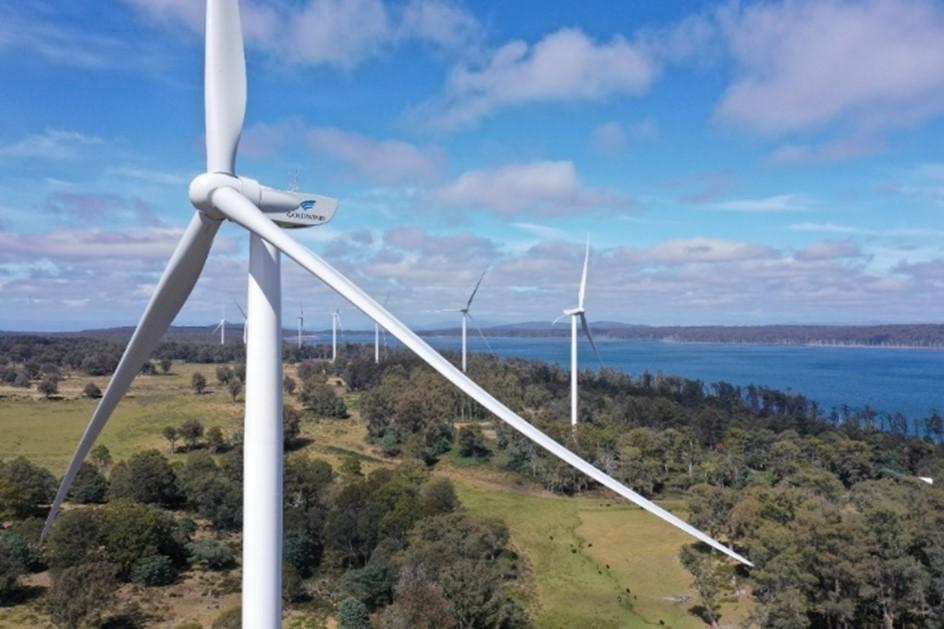Cattle Hill Wind Farm is one of a kind, because of its unique location in Tasmania’s Central Highlands and being home to the endangered Tasmanian wedge-tailed eagle, and white-bellied sea eagle.
The wind farm’s 16 tower-mounted optical units are designed to detect birds. The wind farm has a sophisticated system called IdentiFlight which uses artificial intelligence to identify any eagles flying towards the wind turbines at which point they temporarily shut down to prevent the eagles from colliding with turbine blades.
The 144-megawatt wind farm, co-owned by Powerchina and Goldwind Australia, started sending power to the grid late 2019 and commenced full operations in 2020.
Before constructing the wind farm, environmental studies found there was a risk of endangered eagle collisions with turbines due to high eagle activity in the area. It is a common complaint that wind farms cause death and injury to birds, and for this reason management wanted to ensure they had plans in place to mitigate the risk.
“The dominant risk that we identified before construction of the wind farm took place was the risk to the endangered Tasmanian Wedge-tailed eagle,” said managing director John Titchen.
“We decided to build in the steps we would take to mitigate this risk early in the planning stage. The landowner Peter Downie flew with a Goldwind representative to the US to review the technology as they had already been using IdentiFlight there and it wasn’t yet used in Australia.”
Goldwind had the IdentiFlight system running before the first turbine was commissioned to mitigate loss of the protected eagles.
“It’s neuro-network system is like a brain – it’s now trained for both the endangered Tasmanian wedge-tailed eagle, and the vulnerable white-bellied sea eagle. What it does is narrow down the time the turbines are offline, so you lose less energy, but you maintain the protection.”
The turbines stand at 170 metres in height. Each day on average the system sends a turbine shut down signal at the project up to 400 times. The average shut down time is about one and a half minutes each, that is 11.5 hours every day across 48 turbines to save the endangered eagles.
When asked about his personal perspective on the success of the system John Titchen said he is pleased with the technology’s environmental benefits.
“I find it personally motivating that we’ve been able to do this and access innovation in order to address this environmental concern - we don’t want to lose eagles as a result of the wind farm’s operation.”
“I have been at the site when there were several eagles flying over the wind farm, it was quite amazing to see the turbines automatically shutting down and re-starting once the eagles flew past.”
The wind farm has completed an 18-month trial of IdentiFlight and will soon publish a report of its effectiveness.
The wind farm is located on the eastern shore of Lake Echo in the southern side of the Central Plateau of Tasmania and connects into TasNetwork’s transmission network at the adjacent Waddamana Substation.
Its 144-megawatt output is equivalent to the consumption of approximately 60,000 Tasmanian homes, increasing the state’s renewable energy generation by approximately 5% and providing a significant contribution to the recent achievement of Tasmania’s target of becoming fully self-sufficient with renewable energy by 2022.
The Clean Energy Regulator is running a series of case studies on the innovative approaches taken by power stations participating in our schemes. A power station that provides electricity from renewable energy sources (commonly wind, solar and hydro) may be accredited by the Clean Energy Regulator under the Large-scale Renewable Energy Target scheme.
Once a renewable energy power station is accredited, large-scale generation certificates (LGCs) can be created for the electricity generated - one LGC per megawatt hour (MWh). Cattle Hill Wind Farm was accredited in 2019 and has since produced over 791,000 LGCs.

Turbines at Cattle Hill Wind Farm, Lake Echo, Tasmania